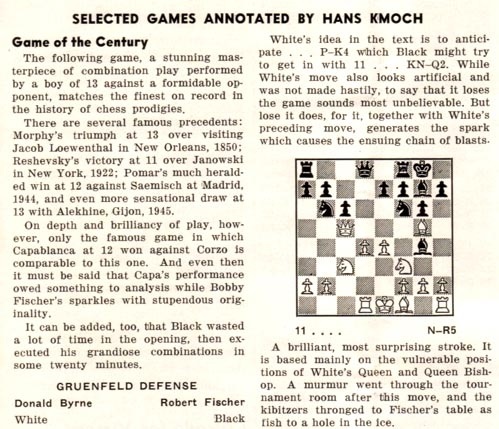
Edward Winter
A book by Peter Fuller entitled The Champions and subtitled ‘The secret motives in games and sports’ (Urizen Books, New York, 1977) discusses figures from the worlds of chess, bullfighting, boxing and motor-racing. The chess chapter (pages 49-104) has plenty of trivia and tripe about the masters of yesteryear (the first paragraph states, ‘Steinitz claimed to have played God at pawn odds and won’) but is essentially about Fischer, viewed from a psychoanalytical standpoint.
The results are spectacular. Fuller opines that Fischer’s queen sacrifice in his famous game against Donald Byrne in 1956 ‘is central to the understanding of Fischer’s psychological motivations in chess’ and that ‘more has been written about this queen sacrifice than about any other single move made this century’ (pages 71-72). The implications for Fischer were, it is indicated on page 81, greater than anybody could have imagined:
‘Although Fischer played excessively aggressive chess, it remained difficult to demonstrate manhood through a non-physical game, in which the queen is represented as the main ally.
His need to disguise his internal Regina affected chess and life. On the board it was first expressed in the queen sacrifice. The historic move paralleled his ego-ambition to deny identification with his mother, simultaneously symbolizing a refusal to accept the option of homosexuality, and a defiant rejection of infantile dependence. A reversal of usual chess practice, it paralleled a reversal he was trying to bring about with himself.’
These observations were considered so judicious that the sentence beginning ‘The historic move’ was paraded on the back of the dust-jacket. Yet it is on page 100 that the chapter attains its high-water mark:
‘For some Russians, as Lenin warned, chess may become an alternative to revolutionary thought: instead of confronting the failure of the revolution in terms of history, players may attempt to achieve individualistic solutions on the chess board, and these become inextricably bound up with their own private conflicts. Chess, and its accompanying strategical and tactical theory, may thus be pursued as a way of working out a better form of regicide, and of evading reality and retreating into a private world at the same time.
We may correspondingly speculate (and it is no more than that) that the dramatic upsurge of interest in Fischer in the sixties, combined with the sudden birth of chess as a major cultural component in America, was in part related to the continuing national preoccupation with the assassination of President Kennedy. Interest in the game may socially have been a way of mastering the guilt and anxiety inevitably associated with the murder of a leader. The wish to return to the traumatic event may thus parallel, within a broader context, the desire of Freud’s grandson to return to the scene of his mother’s departure in order to find a way of binding the anxiety associated with it. It is at least possible that chess thus provides a way of repeating rather than remembering national as well as personal conflicts.’
(3100)
Concerning the Byrne v Fischer brilliancy which is sometimes called the ‘Game of the Century’, some writers – see, for instance, page 262 of Grandmasters of Chess by Harold C. Schonberg (Philadelphia and New York, 1973) – have omitted to specify that the remark was made in the context of games by prodigies. We reproduce below the relevant part of Hans Kmoch’s article (far from accurate as regards historical details) on page 374 of Chess Review, December 1956:

(3880)
The full score of the Byrne v Fischer game: 1 Nf3 Nf6 2 c4 g6 3 Nc3 Bg7 4 d4 O-O 5 Bf4 d5 6 Qb3 dxc4 7 Qxc4 c6 8 e4 Nbd7 9 Rd1 Nb6 10 Qc5 Bg4 11 Bg5 Na4 12 Qa3 Nxc3 13 bxc3 Nxe4 14 Bxe7 Qb6 15 Bc4 Nxc3 16 Bc5 Rfe8+ 17 Kf1 Be6 18 Bxb6 Bxc4+ 19 Kg1 Ne2+ 20 Kf1 Nxd4+ 21 Kg1 Ne2+ 22 Kf1 Nc3+ 23 Kg1 axb6 24 Qb4 Ra4 25 Qxb6 Nxd1 26 h3 Rxa2 27 Kh2 Nxf2 28 Re1 Rxe1 29 Qd8+ Bf8 30 Nxe1 Bd5 31 Nf3 Ne4 32 Qb8 b5 33 h4 h5 34 Ne5 Kg7 35 Kg1 Bc5+ 36 Kf1 Ng3+ 37 Ke1 Bb4+ 38 Kd1 Bb3+ 39 Kc1 Ne2+ 40 Kb1 Nc3+ 41 Kc1 Rc2 mate.
Which brilliancy played in 1956 did C.J.S. Purdy annotate under the title ‘Game of the Century? Yes and No’?
(10008)
The game discussed by Purdy was Smyslov v Pachman, Moscow Olympiad, 1956: 1 c4 Nf6 2 Nc3 e6 3 d4 d5 4 cxd5 exd5 5 Bg5 c6 6 e3 h6 7 Bh4 Bf5 8 Qf3 Qb6 9 Qxf5 Qxb2 10 Qc8+ Ke7 11 Nxd5+ cxd5 12 Qc1 Qb4+ 13 Ke2 Qb5+ 14 Kf3 Qd7 15 Bxf6+ Kxf6 16 g3 Qf5+ 17 Kg2 Bd6 18 Qd1 g6 19 Bd3 Qe6 20 Rb1 Nc6 21 Rxb7 Rab8 22 Rxb8 Rxb8 23 Ne2 Kg7 24 Qa4 Ne7 25 Rb1 Rxb1 26 Bxb1 Bb8 27 Bc2 h5 28 Qb5 Bc7 29 h4 a6 30 Qb7 Resigns. From page 139 of the June 1957 issue of Chess World:

Purdy discussed the game in more detail, under the title ‘That “Mad” Move by Smyslov’, on page 221 of the October 1957 Chess World and on pages 240-241 of the November 1957 issue.
As shown above, the original (June 1957) article included this remark by Purdy about Smyslov v Pachman:
‘... one magazine calls it the game of the century, and on its front cover, what’s more.’
Another conclusion not to be jumped to is that Purdy never realized or corrected his mistake. A year later he reverted to the matter in Chess World:
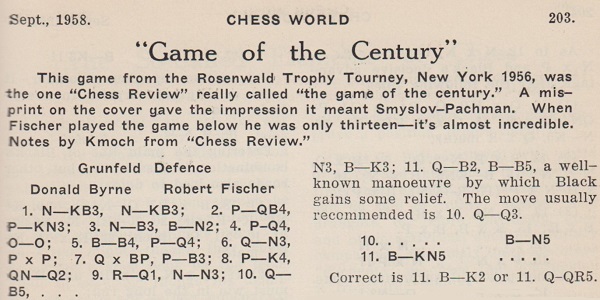
The relevant material in the December 1956 Chess Review:

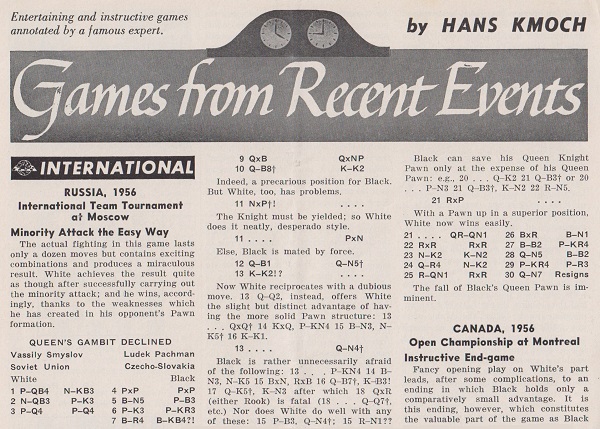
(10015)
In his review of Fischer’s My 60 Memorable Games on pages 370-371 of the December 1969 BCM W.H. Cozens mentioned as one of the ‘many surprises’:
‘It does not begin with that “Game of the Century” against Donald Byrne in 1956. The game is not even included in the book.’
The brilliancy had appeared on pages 64-67 of the future world champion’s 97-page volume Bobby Fischer’s Games of Chess (New York, 1959 and London, 1960):

From the Introduction, on page xiv
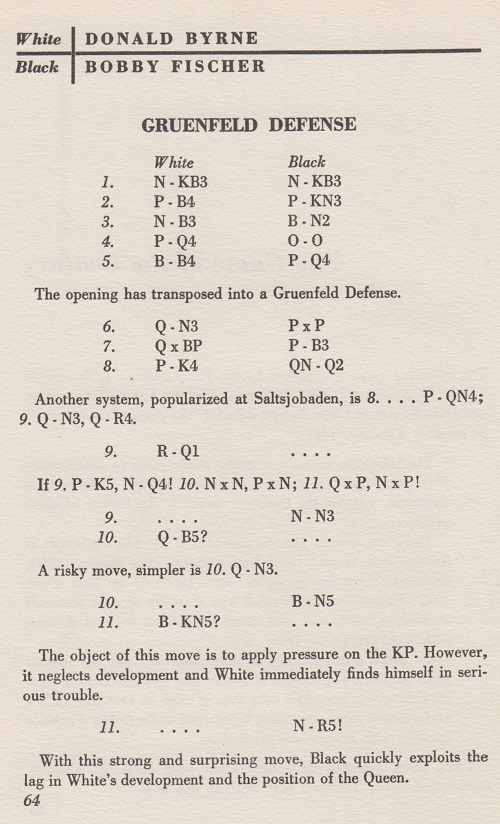
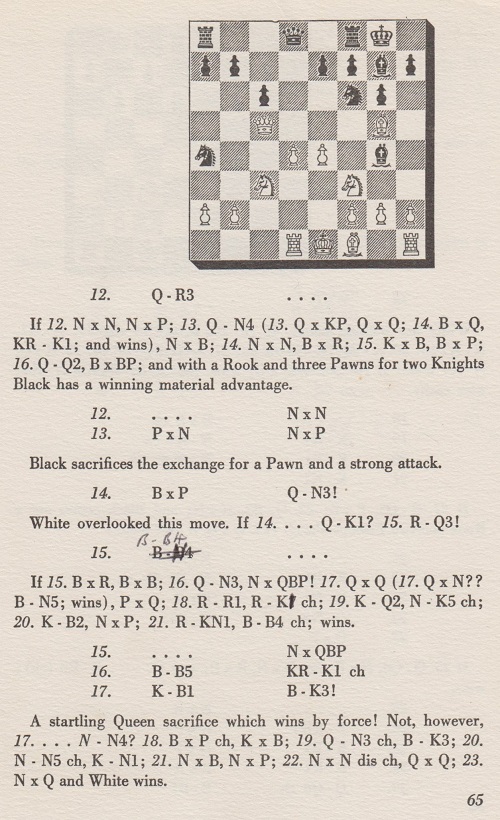
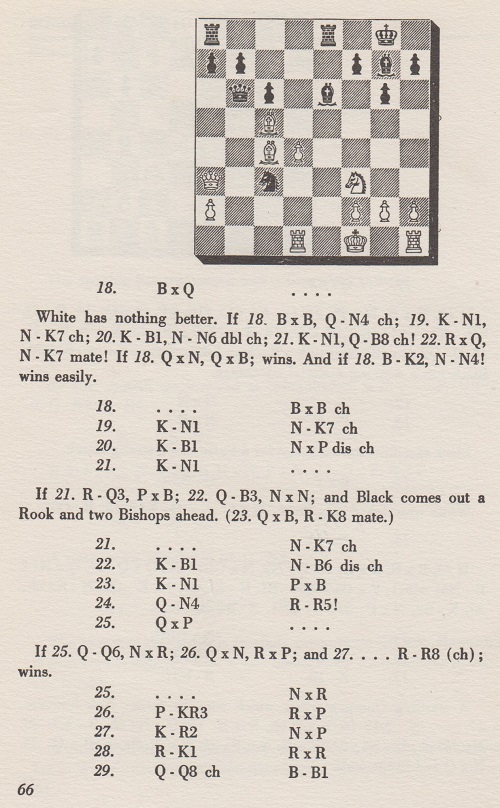

Fischer’s statement on page xiv above that the tournament was ‘held during October and November’ is at variance with other sources, including Jack Spence’s book (Omaha, 1958) on the second and third Rosenwald tournaments. Spence recorded that play in the third event ran from 7 to 24 October 1956. Byrne v Fischer occurred in the eighth round, on 17 October (pages 73-75), and that date appears on two versions of the score-sheet in Fischer’s hand. See, for instance, page 63 of My Seven Chess Prodigies by John W. Collins (New York, 1974) and page 170 of A Picture History of Chess by Fred Wilson (New York, 1981).
As regards Lessing J. Rosenwald (1891-1979), below is a photograph from page 44 of the February 1955 Chess Review:
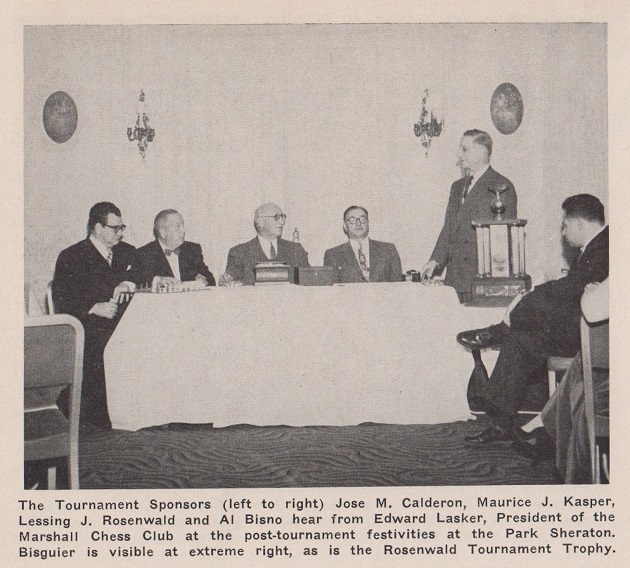
Page 107 of the April 1955 Chess Review had a small picture of Donald Byrne:
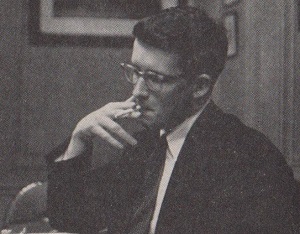
(10238)
After Kmoch’s annotations were reproduced, under the title ‘Game of the Century’ (in double quotation marks), on pages 203-204 of the September 1958 Chess World, F.A. Crowl disputed a point (at move 33) on page 257 of the November 1958 issue. A rebuttal, entitled ‘Kmoch Was Right’, appeared on page 64 of the March 1959 Chess World.
Kmoch’s notes to the game are also in his book Die Kunst der Verteidigung. See, for instance, pages 131-133 of the fourth edition (Berlin, 1982).
From page 278 of Gran Ajedrez by A. Alekhine (Madrid, 1947):
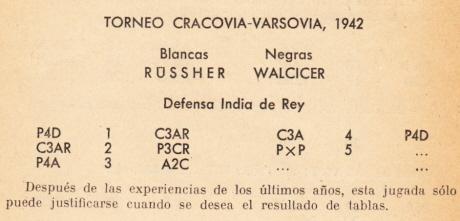
1 d4 Nf6 2 Nf3 g6 3 c4 Bg7 4 Nc3 d5 5 cxd5 Nxd5 6 e4 Nxc3 7 bxc3 c5 8 Bc4 O-O 9 h3 cxd4 10 cxd4 Nc6 11 Be3 Qa5+ 12 Bd2 Qa3 13 Rb1 Nxd4 14 Bb4 Nxf3+ 15 Kf1
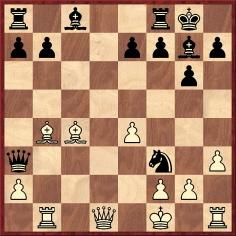
Black played 15...Be6, and the game continued 16 Be2 Qxa2 17 Bxf3 Rfd8 18 Qe1 Rac8 19 g4 b6 20 Bxe7 Bc3 21 Qc1 Rd2 22 Bh4 Bd4 23 Qe1 Rcc2 24 Rh2 Bc4+ 25 Kg1 Rxf2 26 Rxf2 Rxf2 27 Bxf2 Bxf2+ 28 Qxf2 Qxb1+ 29 Kh2 Qa2 30 Qxa2 Bxa2 31 White resigns.
Our translation of Alekhine’s notes was given on pages 174-175 of 107 Great Chess Battles (Oxford, 1980), and below is a comment of ours on the game (see page 202 of Kings, Commoners and Knaves):
Few combinations are unique, and there are often ‘variations on a theme’. A strange example is the so-called ‘Game of the Century’ won by the 13-year-old Fischer against Donald Byrne in the 1956 Rosenwald Trophy Tournament. It was a Grünfeld Defence, the climax to which came when Black ignored the attack on his queen by the white queen’s bishop and played ...Be6, with overwhelming threats to the white king at f1. Yet all that is exactly what also happened in the [above] game, played the year before Fischer was born.
Now, Henryk Konaszczuk (Zabrze, Poland) informs us that he has found the game on page 3 of Goniec Krakowski, 22 November 1942. It was played in Warsaw on 28 June 1942 in a match between Warsaw and Cracow. The players’ names were H.W. Russner and K.Walcker, and not Rüssher and Walcicer. K. Walcker won the championship of Cracow in 1940 and came second in 1941.
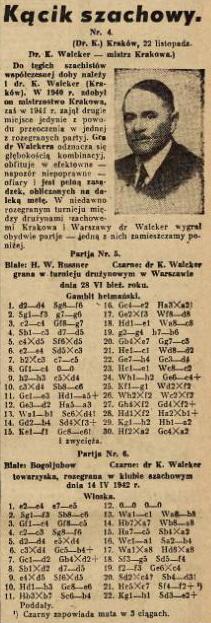
(7926)
See too The Best Chess Games and Articles about Bobby Fischer.
To the Chess Notes main page.
To the Archives for other feature articles.
Copyright: Edward Winter. All rights reserved.